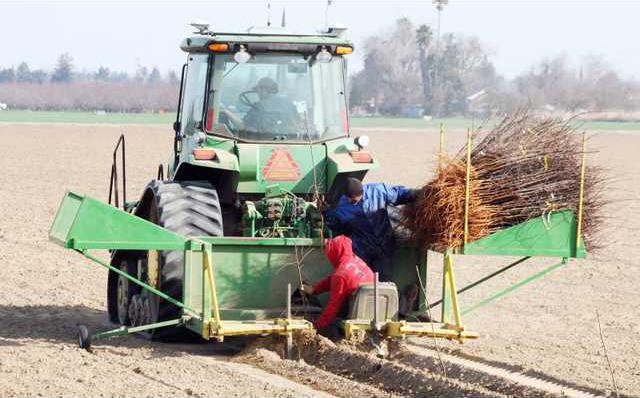An economic study conducted at University of California, Davis is estimating a $1.67 billion loss to agriculture and ag-related industries in the Central Valley due to the recent drought, resulting in a $3.4 billion hit to the state's economy, and a ripple effect throughout all segments of the state.
While the UC Davis study paints a bleak picture, the California Farm Water Coalition says it could have been worse.
"Researchers are estimating that 400,000 acres will remain unplanted but added that the numbers will be revised in an updated report expected next month,” said the California Farm Water Coalition in a release. “Earlier surveys conducted by the Coalition doubled that amount of unplanted acreage but recent increases in water deliveries by state and federal projects, along with an increase in pumping from aquifers, have resulted in the lower number.”
According to the Coalition, the increased water supply since earlier this year is good news for some farms as well as consumers, and will result in more acres being planted than originally estimated. However, almost 15,000 workers will still lose their jobs – an unavoidable impact from the negative impacts caused by California’s ongoing drought.
In the report, researchers say that consumers can expect food price increases within the expected range normally seen from year-to-year. Additionally, over 75 percent of the surface water lost due to the drought has been replaced by groundwater pumping, a practice that cannot continue indefinitely.
“Unless a long-term solution to California's water supply is developed, including new surface storage, the flexibility brought about by groundwater pumping will be lost increasing the likelihood that consumer price protections won't exist in the future,” said the California Farm Water Coalition while also sharing their increasing concern regarding the number of citrus trees that are now being removed from the east side of the San Joaquin Valley. “Talks by the Coalition with individual water districts indicate that 4,000 acres of mature citrus trees are being removed and that number could go up.”
Not only do current deliveries from Friant Dam to farmers in a 130-mile swath from Chowchilla to Bakersfield remain at zero, farmers on the west side of the San Joaquin Valley are also at zero percent for their Central Valley Project deliveries – forcing water districts to seek transfers of water that come with a price tag as high as 10 times the normal cost farmers pay for their water.
According to Mayor Sylvia Chavez of the Westside community of Huron, only 1,500 workers will be employed by surrounding farms, which normally hire as many as 6,000 seasonal workers. Because of this, Chavez predicts that people will lose their homes and move away, further affecting Huron's business community that has already declined by 10-20 percent.
Additionally, the Coalition says that the drop in water deliveries to farmers in the Sacramento Valley in Northern California is expected to result in one in five acres planted to rice last year will be out of production.
According to the UC Davis report, the loss of 112,000 acres means ag-related industries will not have positions for more than two dozen drivers to haul fertilizer to rice fields, resulting in a decline in diesel fuel and oil purchases, parts purchased from the local automotive parts dealer, and other negative impacts to the automotive and farming equipment industries.
To read the entire study, visit http://news.ucdavis.edu/search/news_detail.lasso?id=10933.









